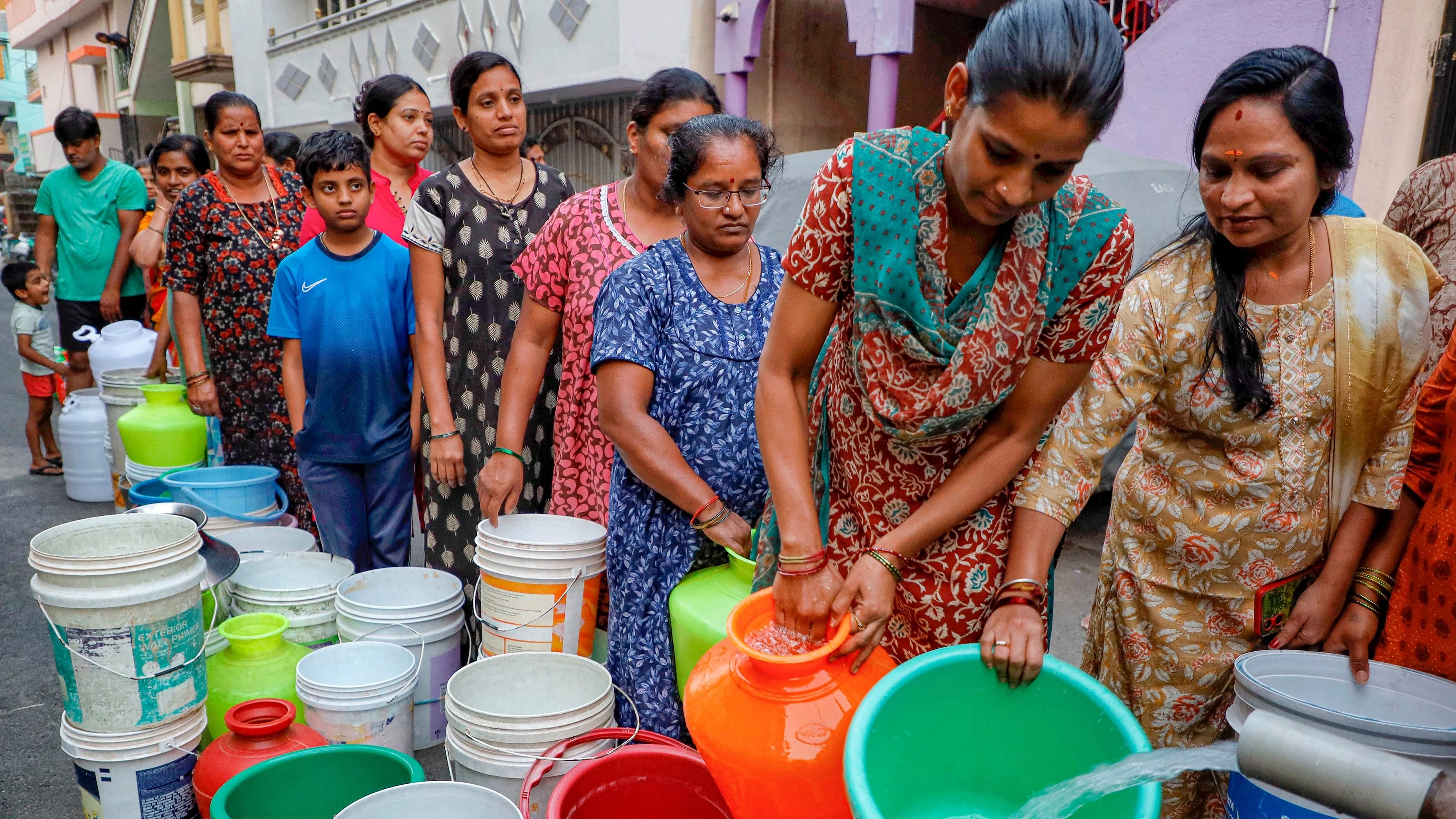
People collect drinking water from a water tank amid the ongoing water crisis in Karnataka, at Shivananda Nagar in Bengaluru.
Credit: PTI Photo
Karnataka, which is the second driest state in the country after Rajasthan, often faces spells of drought, but the situation this year is perhaps the worst in recent times. According to Deputy Chief Minister D K Shivakumar, the state has not experienced such a drought in three to four decades. Karnataka is divided into 10 agro-climatic zones, taking into consideration the rainfall pattern, soil types, texture, depth and physio-chemical properties, elevation, topography, major crops and type of vegetation. Five of them fall under the dry zone. The fact that the entire rain-fed agriculture area is prone to drought makes Karnataka one of the most vulnerable states. During the monsoon season last year, the rainfall deficit was 56 per cent in June and 76 per cent in August, the highest in 122 years. The percentage departure from normal was 65 per cent in south interior Karnataka, 90 per cent in north interior Karnataka, 42 per cent in the Malnad region, and 19 per cent in the coastal region, according to the meteorological department. A survey conducted by the state government indicates that agricultural and horticultural crops suffered losses ranging from 50 per cent to 100 per cent. The government has declared 223 of the 236 taluks as drought hit.
The state is taking measures to mitigate the impact of drought by releasing relief funds, restricting lifting of water from rivers for irrigation, and imposing fines against the use of drinking water for non-consumptive purposes. In its memorandum to the Centre, the state makes two important assertions. One, the Western Ghats form the major catchment area and contribute 80 per cent of the inflows to a majority of the dams. Two, climate change has propelled erratic rainfall, caused concentration of large spells of rainfall in a short span of time, and triggered intermittent dry spells. In other words, the government knows where exactly the problem lies.
Instead of merely taking temporary steps like releasing funds for relief during a crisis, the government should evolve a long-term plan to face the many risks posed by climate change, be it consistent drought or sudden floods. The State Disaster Management Authority (SDMA), tasked with the responsibility, should evolve a holistic plan covering protection of Western Ghats. It should encourage rainwater harvesting, rejuvenation of water bodies, recharging of groundwater, and recycling of water. It should also look at changing cropping patterns. Citizens should give up their lackadaisical attitude and participate actively in conservation efforts. The demand for water will exceed supply as the years go by and unless we take corrective steps immediately, we may be staring at a catastrophe.